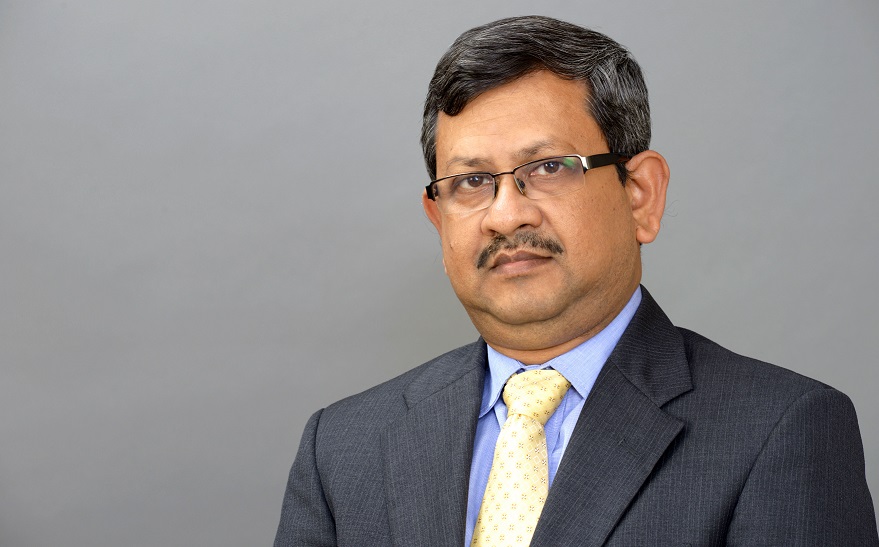A ‘compliance first’ culture, a strong risk management framework and strict adherence to fair practices code coupled with sincere approach to customer grievances is the clear prescription from the regulator to the NBFCs; Neutral stance allows MPC to be nimble in its rate action


Ms. Achala Jethmalani, Economist, RBL Bank

Siddhartha Sanyal, Chief Economist and Head of Research, Bandhan Bank

Indranil Pan, Chief Economist at YES BANK
FinTech BizNews Service
Mumbai, 9 October, 2024: RBI today maintained the Repo rate at same levels and changed the stance to Neutral, which was largely in line with consensus. RBI also announced a number of other important measures. Here are views of leading Economists on MPC decisions:
Dr. Soumya Kanti Ghosh, Group Chief Economic Adviser, State Bank of India:
“In consonance with broader market expectations, the newly constituted MPC kept the policy rates unchanged at 6.50% (tenth-time in a row). It is interesting to note that the change in stance decision was unanimous MPC decision. Also, the first meeting of the MPC in all earlier terms has started with unanimous decisions with a rate cut or pause. Glancing back, it has been 30 odd months since the RBI first used the “Withdrawal of accommodation” stance.
RBI retained its inflation projection for FY25 at 4.5%. The outlook for inflation will largely be shaped by food inflation trajectory and base effect. Further, the recent uptick in metal and crude oil prices due to geopolitical tensions (Israel-Iran conflict) may pose upside risks to inflation and need close monitoring. RBI retained its real GDP growth projection for FY25 at 7.2% with risks evenly balanced. The agriculture sector is expected to perform well on the back of above normal rainfall and robust reservoir levels (leading to healthy kharif sowing). RBI projections indicate that economic growth is robust and may remain above 7% for next couple of quarters. This raises an interesting question as to whether RBI is preparing the grounds for an ensuing rate cut harmonizing with current momentum in growth. “Perhaps a 7% growth with a rate cut has never happened in India’s history or the world history”, but for 2016 when a new MPC had taken over! Country-wise experiences indicate that barring Philippines, the GDP growth at the time of rate cut was lower than the average growth of preceding four quarters. With the fortitude of foresight, RBI has clearly offered sufficient time to markets to prepare for the eventual pivot.
However, we estimate that Government growth projection of 6.5%-7% looks more reasonable. Leading indicators are showing mixed signals. For instance, domestic passenger vehicle sales which is an indicator of urban demand as well as other indicators of consumption and demand as diesel consumption, electricity demand and bitumen consumption have eased. Transport and communication indicators as passenger and freight traffic at airports and toll collection are showing traction, however, e-vehicle registration continues to lose steam in Aug’24 and Sep’24. Thus, growth seems to be entering a softer patch. Capital expenditure has also slowed down in current fiscal.
Additionally, the credit deposit differential has now narrowed down to 150 basis points, the lowest since May 2022 and down from the high of 810 basis points in Dec’22. Interestingly, the year-to-date growth rate in the current fiscal shows that credit growth after adjusting for the merger is still lower by Rs 3 trillion (as on Sep’20), but more interestingly higher by Rs 3.4 trillion compared to deposit. There is also a slowdown in leading indicators of consumption. Perhaps the months of October and November could script a different story.
The other regulatory / developmental announcements mirror the RBI’s penchant to reinforce the B&FS structural architecture.
Firstly, as of March 2023, there are 1502 UCB. Of this, 79 UCB have capital adequacy less than 9%. The proposal to explore alternate avenues to raise capital for UCBs is to address this inherent contradiction in UCB. The proposal is chain of long drawn reform process in the segment and will increase the stability of the sector and protect depositor interest.
Secondly, smoothening data asymmetry for tackling climate related funding through proposed 2-stage RB-CRIS platform, enhancement of UPI Lite wallet limit to Rs 5,000 (while the per-transaction limit in feature phone centric UPI123Pay stands enhanced from Rs 5,000 to Rs 10,000), introducing name look-up facility in inter-Bank transfers to mitigate customers’ woes and reduce frauds all going a long way in cementing the cogs that make the banking forward looking yet connected to the grounds.
Thirdly, a ‘compliance first’ culture, a strong risk management framework and strict adherence to fair practices code coupled with sincere approach to customer grievances is the clear prescription from the regulator to the NBFCs.
The fine balancing act of the Central Bank, a clear audacity defying odds and orbit of other big boys club members to take an independent and appropriate rate cut call shows its maneuverability to ensure inflation remains aligned to a narrow target framework, duly factoring in the vulnerability of base effects and supply shocks. The fine balancing act, assiduously choosing the Middle Path, gives a raw finesse to the Mint Street actions in these checkered times. Echoing Governor, one can only expect the calibrated bringing back of inflation horse to stable is symbolic of the ages old Indian practice with the coming home of the horse reinforcing the sovereign’s reigning supremacy.”
Rahul Bajoria, India and ASEAN Economist at Bank Of America
· The newly reconstituted MPC kept repo rate on hold at 6.50%, but changed its stance to neutral.
· We see the RBI signaling its openness to a cut, but given rising geopolitical uncertainty, has chosen to wait.
· We expect a 25bp rate cut in December MPC, and will watch growth and inflation indicators carefully in next few weeks.
The reconstituted MPC stays on hold, but changes stance
The newly reconstituted MPC stayed on hold in the October meeting, keeping the repo rate at 6.50%, for the tenth meeting in a row. The biggest change came in the form of a change in stance to neutral unanimously, but one new member (Dr. Nagesh Kumar) voted for a 25bp rate cut. The RBI governor said the MPC remains unambiguously focused on inflation and is looking to align inflation to its target on a durable basis. Near term inflation risks remain elevated, due to weather related disruptions, but underlying inflation risks remain in check.
25bp rate cut likely in December meeting
The latest guidance in our view sets up the next meeting in December as the one where RBI can potentially cut rates, amid slowing growth and manageable inflation. The governor's speech today emphasized the need to unambiguously safeguard inflation expectations, which despite falling core inflation have stayed elevated. But we sense greater balance between growth and inflation risks on RBI's mind, leading to the shift in stance. This in our view is a way for RBI to signal its openness to cut rates if needed, subject to last mile inflation target achievement in next few quarters. As December MPC approaches, the growth slowdown in India will become apparent, as inflation aligns itself to the 4% target. We expect repo rate cuts of 100bp by December 2025, beginning December 2024. If rate cuts are delayed or smaller, downside risks to growth would rise.
RBI's growth forecasts retained, despite weak data
Despite signs of growth losing cyclical momentum, the RBI maintained its growth projections at 7.2% for FY25. This forecast comes on the back of the staff estimates indicating growth at 7.3%. We are seeing a slowdown in high frequency data, which despite signs of improvement in rural consumption may not be enough to offset the weakness in industrial data, which poses material downside risks to Q2 FY25 GDP forecast of 7.0% by RBI. We continue to project GDP growth at 6.8% for FY25, with risks balanced, as incoming data has been weak, but falling input prices can provide some relief in H2 FY25.
Inflation: Looking through the noise
On inflation, the RBI maintained its projections at 4.5%, despite the improvement in agriculture production, and falling energy prices. The uncertainty around the geopolitical conflict in the Middle East persists and an aggressive spell of rains at end of the monsoon season have added to vegetable prices rising sharply, along with tax hikes on oil products. Still, as we mentioned in our RBI preview (India Watch: RBI October MPC Preview: A lonely hawk 03 October 2024, the preconditions for policy easing, i.e. headline and core inflation aligning to 4%, supply shocks appearing benign, and credit conditions tightening, are on track to being met. The RBI has downgraded the trajectory of inflation slightly over the medium term but has pushed up the forecasts for Q4 24 due to higher perishable prices. Despite inflation likely rising in September, we see real rates staying elevated for an extended period, and headline inflation is closest to the inflation target it has been in almost twenty-two quarters (on a 4-quarter rolling basis).
Siddhartha Sanyal, Chief Economist and Head of Research, Bandhan Bank:
The status quo on the repo rate was no surprise. The MPC rightly decided to wait for critical incoming information related to geo-political developments, important election results, commodity price trends and domestic growth-inflation dynamics in the coming months.
The change in stance to “neutral” after a more hawkish stance of “withdrawal of accommodation” for nearly two and half years is significant and appropriate. However, it should not be interpreted as a precursor to a cut in the repo rate necessarily in the next policy itself. MPC’s action will remain data dependent.
One expects the RBI to stay flexible and prudent in managing liquidity in the coming months without leaving any tool off the table. Growth in reserve money – the measure of primary liquidity infusion by the central bank into the banking system – fell sharply to a compounded annual growth rate (CAGR) of merely around 7% since mid-2022, in sharp contrast to a long-term growth rate of 12-15%. Reserve money growth will likely inch higher gradually in the coming months.
It was heartening that the RBI’s communication following today’s MPC meeting reiterated the central bank's nimble and nuanced approach towards managing the current macroeconomic situation. One feels that the RBI will remain open to supporting growth, if needed, without lowering its long-term commitment to combat inflation.
MPC changed the stance to ‘neutral’ after nearly two and half years. It altered the quarterly projections and retained inflation projection at 4.5% for FY25.
Neutral stance allows MPC to be nimble in its rate action; however, it will likely wait for the forthcoming hump in inflation to dissipate durably before deciding on rate actions.
The Monetary Policy Committee (MPC) kept the repo rate unchanged at 6.50%, as expected, with 5:1 vote. However, the committee, with the new external members, unanimously decided to change the stance to ‘neutral’ from ‘withdrawal of accommodation’ that it had adopted in mid-2022. The RBI presented a balanced view of the economy and expressed confidence over resilience of domestic growth that provides the MPC room to focus on inflation durably aligning with its target of 4%.
Ms. Achala Jethmalani, Economist, RBL Bank:
The monetary policy outcome is broadly on expected lines. The pivot in the stance to neutral is seen paving the way for policy easing in the next 6-months. The MPC’s assessment and outlook on inflation-growth suggest that a rate cut is around the corner. While we still expect the first Repo Rate cut to come through in February 2025, but a 25bps cut at the December policy cannot be entirely ruled out. Of the three newly elected external members Dr. Kumar has voted for a 25bps cut at this policy; suggesting that he is one of the doves on the panel. The pivot to cuts and pace of cuts is getting priced-in, but domestic data and global developments need to be watched to time the first cut.
Indranil Pan, Chief Economist at YES BANK:
“While the stance was changed to neutral, the RBI still retains a hawkish tilt by indicating that they would remain watchful on inflation and be “unambiguously” focused on durably aligning inflation to the 4% mark. Importantly, despite RBI’s own estimates for Q1FY25 GDP growth being missed on the lower side, the full year GDP estimate, and the inflation forecasts have been retained at 7.2% and 4.5%, respectively. What the stance change thus means is that the RBI sees a possibility forming for a rate cut but would still want to keep a close watch on shifting risk perspectives and its consequent impact on India inflation - both higher and lower. Every policy thus becomes live from now on though there is no guarantee for a December cut as India inflation will pass through a brief period of higher (possibly >5%) inflation prints before cooling again. The hope comes from a good SW monsoon and healthy kharif sowing while reservoir levels and soil moisture conditions remains favourable for Rabi crops. The trepidation on clearly calling for a win against inflation comes from global conditions whereby food and metal prices have perked up. RBI points out that core has bottomed, and it becomes important to understand how global oil price and metal prices impact core CPI inflation in an atmosphere where domestic demand conditions remain steady.”
Prerna Singhvi, CFA, Vice President – Economic Policy and Research, National Stock Exchange of India:
The RBI’s MPC—with a new set of external members—expectedly decided to retain the policy repo rate at 6.5% for the tenth consecutive time with a 5:1 majority. Dr Nagesh Kumar was the only member who dissented by voting for a 25bps rate cut. The stance, however, was unanimously revised from “withdrawal of accommodation” to “neutral”, reflecting increased confidence in the disinflation trajectory later in the fiscal year. The GDP growth forecast for FY25 has been retained at 7.2%, with resilience primarily fuelled by momentum in consumption (festive season demand, revival in rural demand) and investment activities (thrust to government capex and signs of pick-up in private investment supported by healthy corporate balance sheets). Similarly, the inflation forecast for FY25 has been kept unchanged at 4.5%. A temporary spike in the near-term, thanks to unfavourable base and rising food prices, is likely to be followed by a moderation in Q4. The RBI’s nimble and flexible approach towards liquidity management via variable rate repo (VRR) and reverse repo (VRRR) operations has ensured alignment of liquidity conditions with the monetary policy stance. Despite the improved performance of banks and NBFCs, the RBI governor explicitly highlighted the stress build-up in certain segments of NBFCs, underscoring the need for sustainable business goals and strong risk management framework.
The RBI's MPC is expected to balance global and domestic developments, closely monitoring the tensions in the Middle East and its impact on crude oil prices along with the near-term food inflation risks. On the domestic front, despite resilient economic growth, emerging signs of demand weakness add uncertainty to the outlook. That said, the ongoing festive season could help ease the incipient weakness. Given the current growth-inflation dynamics, the change in stance grants the MPC increased flexibility, allowing it to closely observe the continuing, albeit incomplete, progress of disinflation, while supporting growth if required. While it opens space for a rate cut as early as December, the probability remains evenly balanced for now given the MPC’s unwavering focus on bringing down inflation within target levels on a durable basis. During this period, the RBI is likely to remain nimble and flexible on liquidity management to ensure orderly money market rates and maintain financial stability.”
Vikram Chhabra, Senior Economist, 360 ONE Asset:
“The shift to a 'neutral' policy stance at the October MPC meeting provides the RBI with the flexibility to cut rates when the data justify such an action. However, the MPC added that it remains 'unambiguously focused on the durable alignment of inflation with the target,' signalling that inflation remains a top priority.
A good monsoon season, healthy Kharif sowing, and high reservoir levels have considerably improved the inflation outlook. Meanwhile, in recent months, some key indicators like GST collections, core production, and PMIs have moderated. Therefore, we expect the RBI to initiate the rate cut cycle in the December or February policy meeting, assuming inflation evolves as anticipated. However, this will likely be a shallow rate cut cycle of 50-75 basis points.”